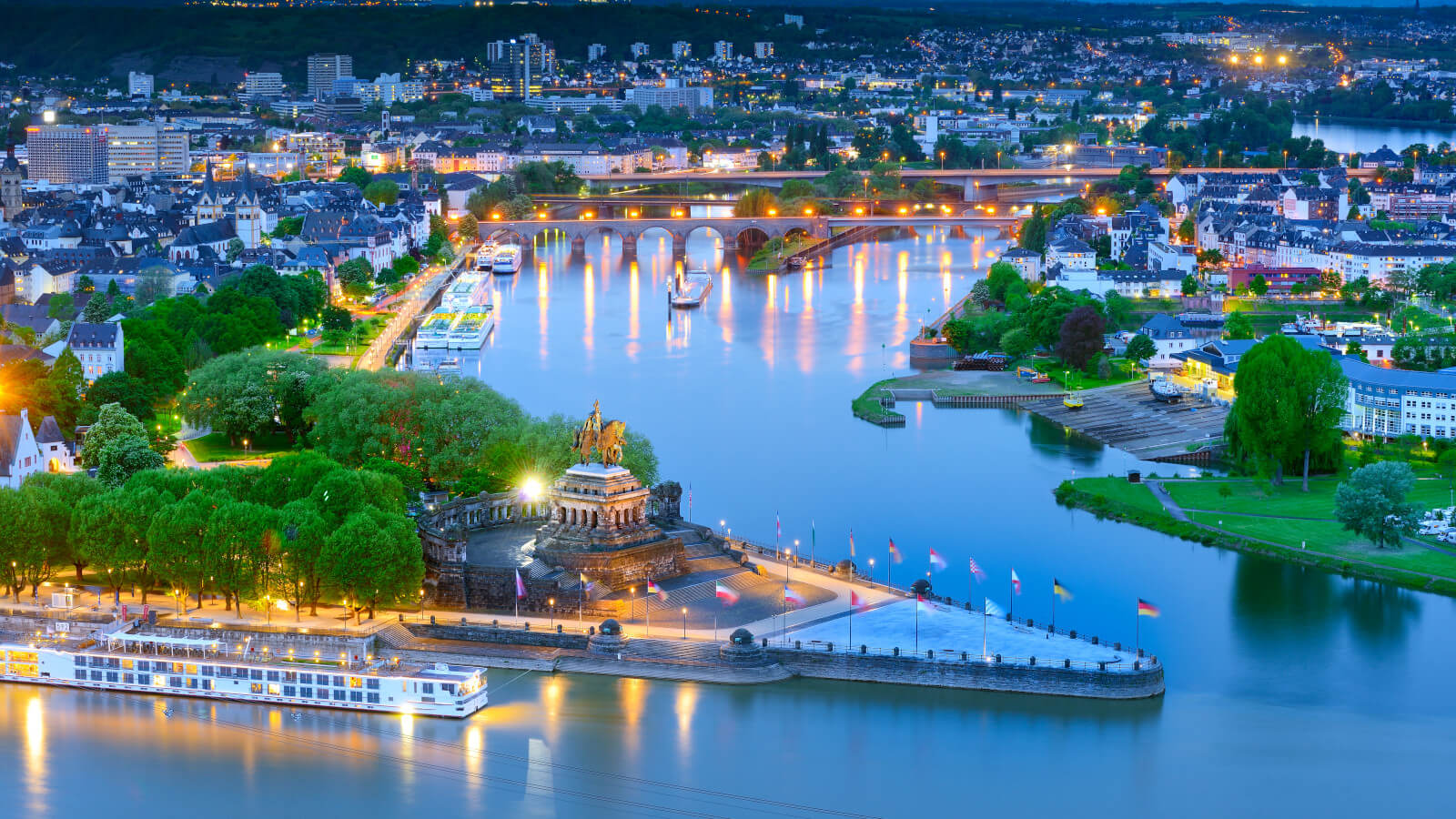I am going to tell about the most famous tourist attraction in Germany which is called Deutsches Eck – German Corner. This place is also called as Majestic Rhine Gateway situated in the city Koblenz. The city also spelled Coblenz, city comes under Rhineland-Palatinate Land (state), western Germany.
Koblenz City
It lies at the junction of the Rhine and Moselle (Mosel) rivers (hence its Roman name, Confluentes) and is surrounded by spurs from the Eifel, Hunsrück, Westerwald, and Taunus mountains.
This is one of the Roman founded town in 9 BC, it was a Frankish royal seat in the 6th century and was given to the archbishops of Trier in 1018 by the Holy Roman emperor Henry II. It was chartered in 1214. After passing to Prussia in 1815, it was the capital (1824–1945) of the Prussian Rhine Province. After World War I it was the seat of the Inter-Allied Control Commission for the Rhineland (1919–29). Although most of Koblenz was destroyed in World War II, many of its historic buildings have been restored, the reconstruction giving the city a spacious, modern appearance.
Koblenz has long been a major commercial centre, and it is also an important military post and administrative centre. Its diverse industries include the manufacture of aluminum products, data-processing equipment, screws, shock absorbers, brakes, and paper products and the brewing of beer. Printing is also important. Other industries are clustered on the city’s outskirts, and the rebuilt harbour on the Moselle is one of the larger mid-Rhine petroleum ports. The surrounding countryside, rich in woods and lakes, makes the city a hub of river traffic and a popular base for conferences and tourists. Weindorf (“Wine Village”), on the banks of the Rhine, is a focal point for the promotion of the German wine trade.
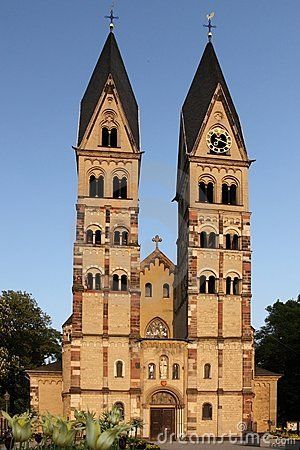
In touching distance of the Deutsches Eck are the pointed Romanesque towers of the oldest church in Koblenz.
Deutsches Eck – German Corner
With the settlement of the Teutonic Order at the confluence of the Rhine and Moselle in 1216, this historic square received its name “Deutsches Eck” (German Corner in English). Koblenz also owes its name to the confluence of the Rhine and Moselle – from “Castellum apud Confluentes”, Latin for “the fort at the confluence” over time, the current name Koblenz became.
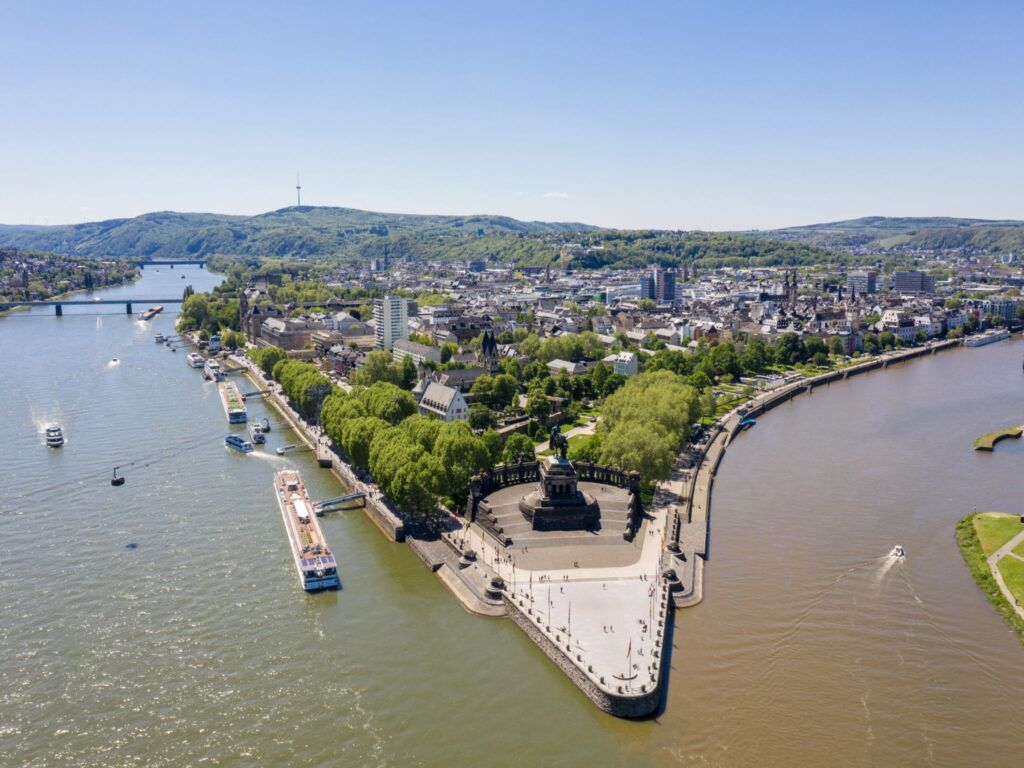
The Moselle is crossed by the Baldwin Bridge (built by the elector Baldwin in 1343), and the point of land at the junction of the Rhine and Moselle, the Deutsches Eck (German Corner), was dedicated to German reunification in 1953. Koblenz has several educational establishments, including the University of Koblenz-Landau and a number of technical institutes and federal and state administrative institutions. The Middle Rhine Museum contains an important collection of art and historical artifacts. Pop. (2003 est.) 107,608. The monument, which is 37 meters high in total – the equestrian statue alone, which shows Kaiser Wilhelm I with a genius, is 14 meters high – is now a magnet for more than 2 million people a year and has been part of the UNESCO World Heritage Upper Middle Rhine Valley since 2002.
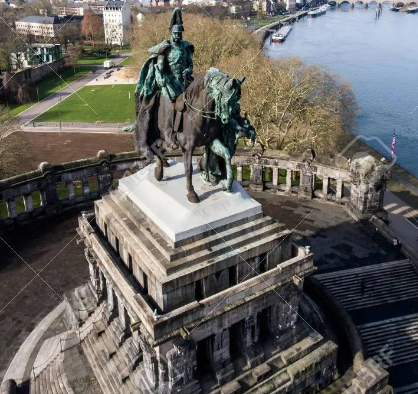
Ehrenbreitstein Fortress
The Ehrenbreitstein Fortress and suburb across the Rhine were incorporated into Koblenz in 1937. A castle, first built on the site in the 11th century, passed to the archbishops of Trier in the 12th century; destroyed by the French in 1801 after a four-year siege, it was rebuilt (1816–32) into one of the strongest fortresses in Europe. Ehrenbreitstein now houses a history and folklore museum. The old fortress on the Moselle (1280–87) and the rebuilt Electoral Palace (1780–86) formerly belonged to the electors of Trier. Medieval churches include St. Castor’s (836) and the Liebfrauenkirche (Church of Our Lady) and St. Florin’s (both 12th century). The town hall (1690–1700) was once a Jesuit college. Other notable buildings include the rebuilt Deutschherrenhaus (1216), the Metternich house, where Austrian statesman Prince Klemens von Metternich (1773–1859) was born, and the municipal theatre (1787).
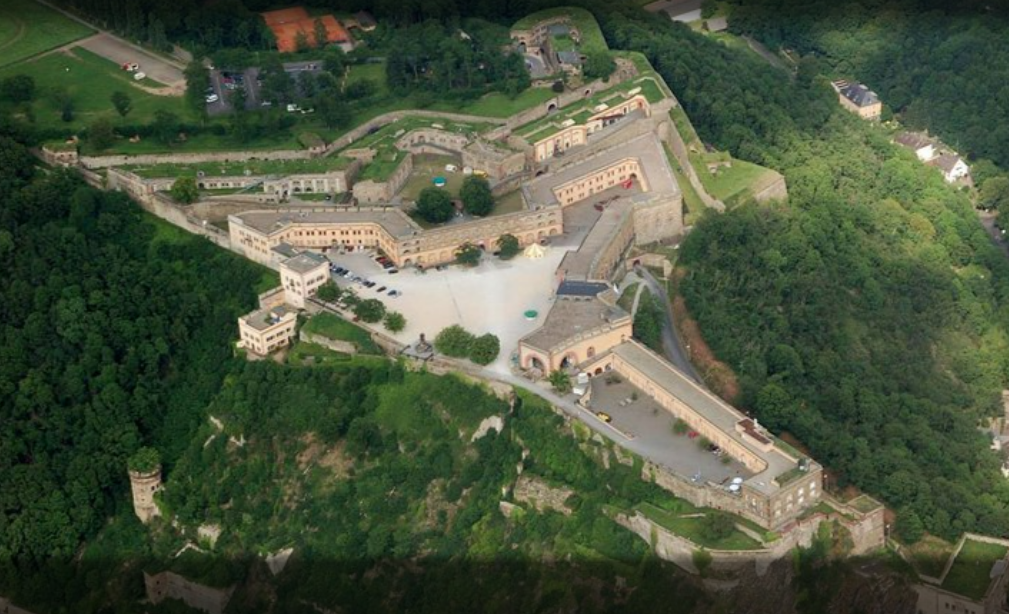
Koblenz Cable Car
Near to Deutsche Eck spot, you can explore the cable car which is also famous for its journey to sightseeing. This lifts you across the Rhine and up to the Ehrenbreitstein Fortress. This cable car has 900 metres long, the system has 18 cars, and its capacity of more than 7,500 passengers an hour is higher than any other cable car in the world.
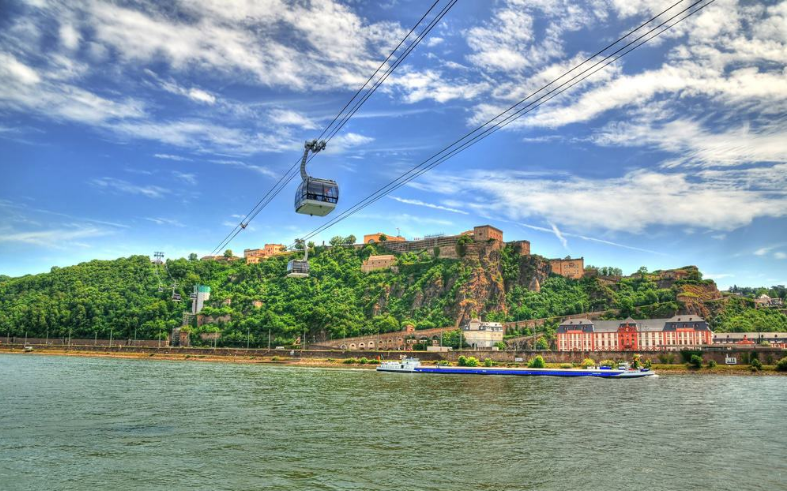
On the crossing by cable car, you will have a bird’s eye perspective of the Upper Middle Rhine’s World Heritage landscape and the mighty river itself. The view is even better if you’re on car 17, which has a glass floor but obviously isn’t for people with vertigo! Try to catch a car around sunset, when the light is stunning.
